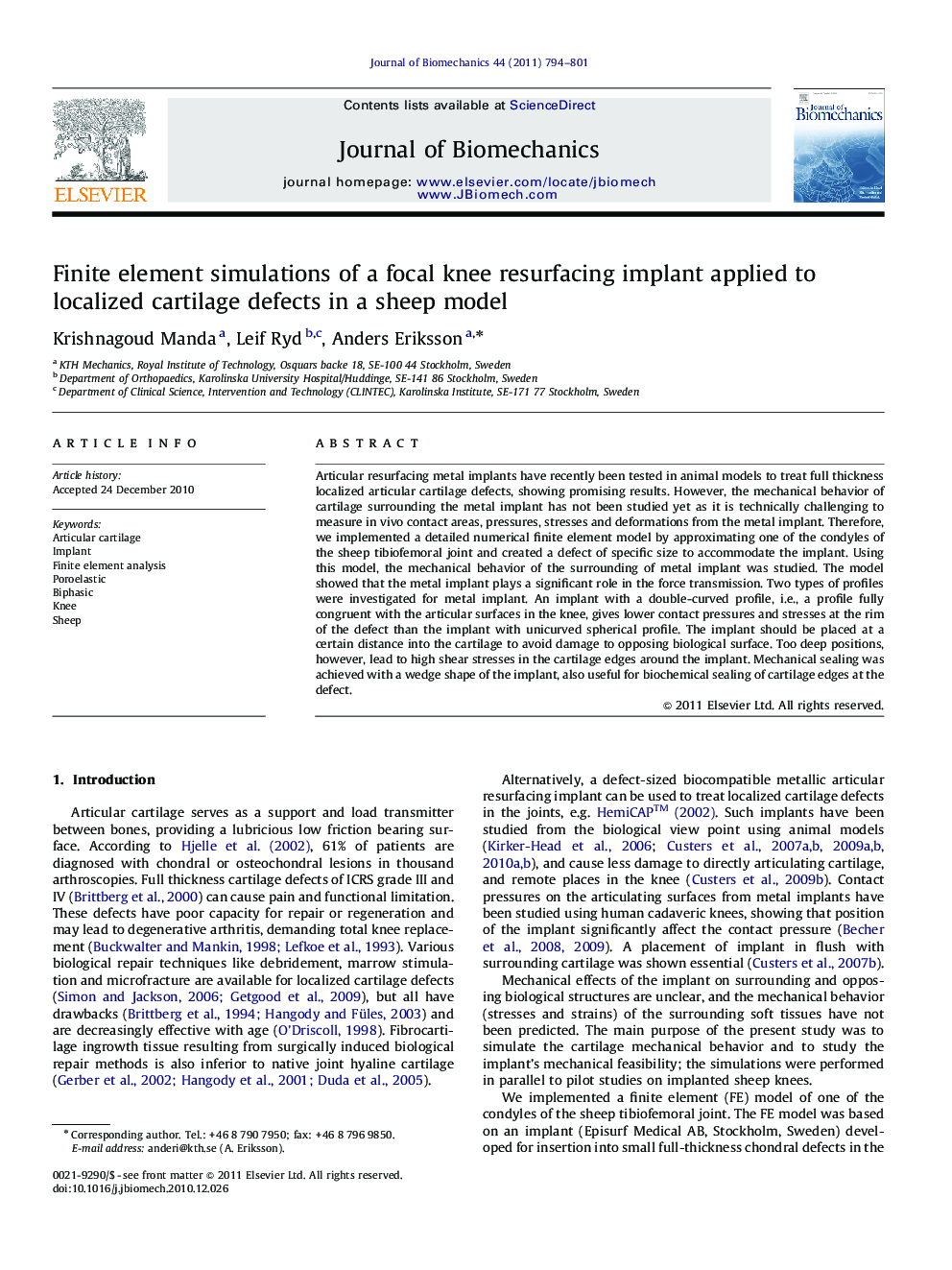| Article ID | Journal | Published Year | Pages | File Type |
|---|---|---|---|---|
| 10432829 | Journal of Biomechanics | 2011 | 8 Pages |
Abstract
Articular resurfacing metal implants have recently been tested in animal models to treat full thickness localized articular cartilage defects, showing promising results. However, the mechanical behavior of cartilage surrounding the metal implant has not been studied yet as it is technically challenging to measure in vivo contact areas, pressures, stresses and deformations from the metal implant. Therefore, we implemented a detailed numerical finite element model by approximating one of the condyles of the sheep tibiofemoral joint and created a defect of specific size to accommodate the implant. Using this model, the mechanical behavior of the surrounding of metal implant was studied. The model showed that the metal implant plays a significant role in the force transmission. Two types of profiles were investigated for metal implant. An implant with a double-curved profile, i.e., a profile fully congruent with the articular surfaces in the knee, gives lower contact pressures and stresses at the rim of the defect than the implant with unicurved spherical profile. The implant should be placed at a certain distance into the cartilage to avoid damage to opposing biological surface. Too deep positions, however, lead to high shear stresses in the cartilage edges around the implant. Mechanical sealing was achieved with a wedge shape of the implant, also useful for biochemical sealing of cartilage edges at the defect.
Related Topics
Physical Sciences and Engineering
Engineering
Biomedical Engineering
Authors
Krishnagoud Manda, Leif Ryd, Anders Eriksson,
